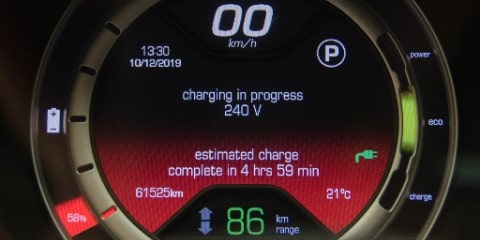Choosing the correct EV cable can be a daunting process considering all the different cables there are available. We try to make this a little easier with our Find My EV Charger page, which allows you to locate the make and model of your vehicle so that we can recommend the most suitable charging cable for your vehicle. However, this is not always straight forward as there are now a few models that can have optional 3 Phase charging, just to make things a little more complicated. As the EV industry finds it’s way, there is going to be a dizzying array of charging options available until battery sizes and charging infrastructure becomes more standard.
What you will find is that a 3 Phase cable is more expensive and for those of us who have no idea what 3 Phase means, you may be wondering why you would need to purchase this cable when a 1 Phase cable is the less expensive option.
It will come as no suprise that a 3 Phase charging cable can use 3 Phase electricity. This means that electrical current will travel through 3 wires whereas current will only travel through 1 wire with a 1 Phase cable. So there is the potential to deliver up to 3 times more current than a 1 Phase cable. It is unusual for domestic residences in in the UK to have 3 Phase electricity though, so it begs the question whether a 3 Phase cable is worth it.
3 Phase power can be installed at industrial premises, so 3 Phase charging may be available at your workplace. 3 Phase charging stations are becoming more widely available in public spaces and often these charging stations will be free to use, particularly at retail parks and supermarkets. So, if you are planning on using 3 Phase charging points and your vehicle accepts more than 1 Phase power, a 3 Phase cable may be a good option. It may also be a good option if you do not have a wall charger at your home and you will be more reliant on public charging. And remember, you can use a 3 Phase cable with any AC public charging point (more on AC below) and it will still provide the right amount of current to your electric vehicle.
So now we know that using a 3 Phase cable with a 3 Phase charging point will charge your vehicle faster than a 1 Phase home wall charger. However, you still need to know if your vehicle can accept 3 Phase power. A vehicle will have what’s called an Onboard charger, which will convert the power that it receives from a wall charger or public charging point from AC (Alternating Current) to DC (Direct Current). The general rule is, if your vehicle can accept more than 7,4kW then it will be capable of accepting 3 Phase current. There is an exception to this as some earlier Mercedes EVs (that accepted around 7kW current), earlier models of the VW e-Up and e-Golf and the Seat Mii and Skoda Citigoe all had an Onboard charger that accepted 2 Phase power, so a 3 Phase cable would be required to deliver the full charging capacity of those vehicles. You may find the information about how much current your vehicle can accept in your vehicle handbook, on the vehicle website or from your vehicle dealer. What will also help you to know is that no PHEV (Plug-In Hybrid Electric Vehicle) or Type 1 socket vehicle can accept 3 Phase power. Up to now, only fully electric vehicles (known as BEV or Battery Electric Vehicle) will accept 3 Phase power, but not all of them. To help you work out if your vehicle can accept 3kW, 7kW, 11kW or 22kW, you can try out our Find My EV Charger page to locate your vehicle or just use the menu links under Find My EV Charger to select the vehicle manufacturer. Once you locate your EV model, the information in the page will show the maximum charging capacity of that vehicle and which charging cable we recommend for it.
We also get questions asking about cables for rapid charging cables. You will probably have heard of, seen, or used a rapid charging station that can charge your vehicle up to 150kW. This is a DC (Direct Current) charging station and you will know them by the way they look; taller units, thicker cables attached to the unit and more expensive to use. You do not need a cable for a DC charging station but you do need a cable to use a 3 Phase charging station, which is AC (Alternating Current).
If you know that you want a 3 Phase cable then we recommend the Type 2 3 Phase 32A cable. There is a 16A 3 phase cable but these are only suitable if your workplace has a 3 Phase 16A charging point. The 16A cable will also only provide around 3kW when using a home wall charger or 1 Phase public charging point.
Still confused? Then drop us a message telling us the make and model of your car and we will send a link to the cable we think is the best fit for your EV.
© 2022. Please do not reproduce without our permission



